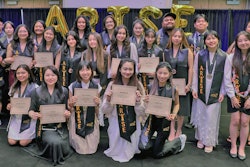As a student who attended and graduated from Sacramento State, a designated Asian American Native American Pacific Islander-serving institution and Hispanic-serving institution, I felt surrounded by diversity. I am a proud graduate of ethnic studies at Sacramento State, which has shaped me in ways that are difficult to justly explain. In short, ethnic studies heightened my consciousness and fueled a passion for social justice.
However, I have been critiqued as an ethnic studies major countless times. There is a common misconception on what is taught in ethnic studies and has been called un-American by many criticizers. Yet, as a student who openly claims an identity as an ethnic studies major, I believe that classes dedicated to learning about the identities of others are necessary, especially in the United States considering our diverse landscape.
Currently, I am in the process of completing a master’s degree at the University of Pennsylvania in higher education. My transition to a predominantly White institution has been a learning experience that I am becoming increasingly appreciative of. I have built relationships with amazing peers, staff and faculty who possess similar ideals and experiences as myself.
In contrast, I have faced microaggressions and heard what I would describe as blatantly racist comments both in and outside of the classroom. Many students of color within my program, including myself, have built a community amongst ourselves, much of it built on sharing our feelings of marginalization and frustration since we have been in our program and together we have created spaces of support with people we know who care.
This fall semester, institutions across higher education have seen an increased visibility of student activism on their campuses, much of it sparked by the movement at the University of Missouri. The examples of student activism at colleges and universities across the country have brought an increased attention to the ways that faculty and administrators are addressing diversity concerns and racist incidents on their campuses. Students have come together in solidarity to express demands and share experiences of marginalization. However, student activism addressing racist incidents and demanding more faculty and administrators of color has a historical presence within higher education in the United States. Even my own undergraduate major, ethnic studies, is a product of student activism in the late 1960s at San Francisco State University.
Using a historical lens to parallel examples of student activism within higher education shows that students of color have continually fought to be heard within their own institutions. The concerns and demands of students of color today are not coming from a sudden burst of racialized experiences. Rather, the frustration that is being expressed today is rooted in historical marginalization that seems to be woven into the fabrics of many American higher education institutions.
In order to make substantial changes in how administrators and faculty are addressing racism and diversity concerns on their campuses, there are several questions that need to be addressed. For one, how are future higher education professionals being prepared to handle challenging issues on their campus relating to racism, sexism, homophobia and so on? Are the skills to engage in difficult situations around sensitive topics being taught to future administrators and faculty? Are there conversations and courses centered around confronting privileges unique to one’s identity?















